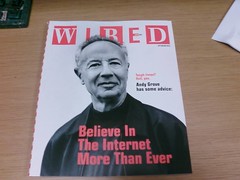Top 10 Blog Posts [May 2009] FriendFeed Steals the Show
Peter Kim has been doing a monthly top post recap for a while now. I like this approach and decided to steal this idea and remix it a little. He does it for convenience if anyone missed any of his posts. I like it for different reasons. It’s a simple way to show you what content resonated the most with readers.
For comparison I’ve also included the dates well as the PostRank score for each post. You can see this blogs full PostRank profile here (my profile is here). The raw numerical ranking is based off Google Analytics traffic numbers. The PostRank score is based off views and the number of times it was shared on Twitter and FriendFeed.
- FriendFeed is Reaching Critical Mass PR 10 - 5/20/09
- Enterprise 2.0 Needs a FriendFeed PR 10 - 5/19/09
- Why URL Shorteners Are Important PR 10 - 5/21/09
- What I learned from HP about co-opetition PR 7.4 - 4/30/09
- Ads in FriendFeed-This Could be Huge PR 10 - 5/19/09
- Leaving HP. Back to Agency Life PR 10 - 4/20/09
- How I moved up 300 spots in AdAge’s Power 150 in 4 months PR 5.5 - 5/05/09
- Social Media will soon face the realities of multiculturalism PR 5.8 - 5/04/09
- Despite the Promise of Social Networks Local Businesses Struggle with Marketing ROI PR 10 - 5/19/09
- Will RSS Ever Go Mainstream? 5.6 - 5/04/09
What resonated the most with you this month? FriendFeed was the big winner. (Kind of validates the claim I made in that most popular post doesn’t it?) After that the post I made when I left HP as well as my final HP posts had the most longevity.
It is interesting to note that nothing posted in the last 10 days shows
up on the list which makes sense given they wouldn’t have had as much
time as the others. It’s also interesting to note that some of the most visited blogs were not always the most shareable. Interesting.
Hope you found this useful. I’ll do my best to make this a monthly habit.
Related articles by Zemanta
- Speedlinking - 10 Posts I Read Today (problogger.net)
- What can Alltop learn from PostRank? (newcommbiz.com)
- On Being a Human Filter (newcommbiz.com)
- Zemanta discovers a content worm-hole via FriendFeed (newcommbiz.com)
- The Social Web Helps Content Live Forever (marketing.fm)
If you enjoyed this post, make sure you subscribe to my RSS feed!









